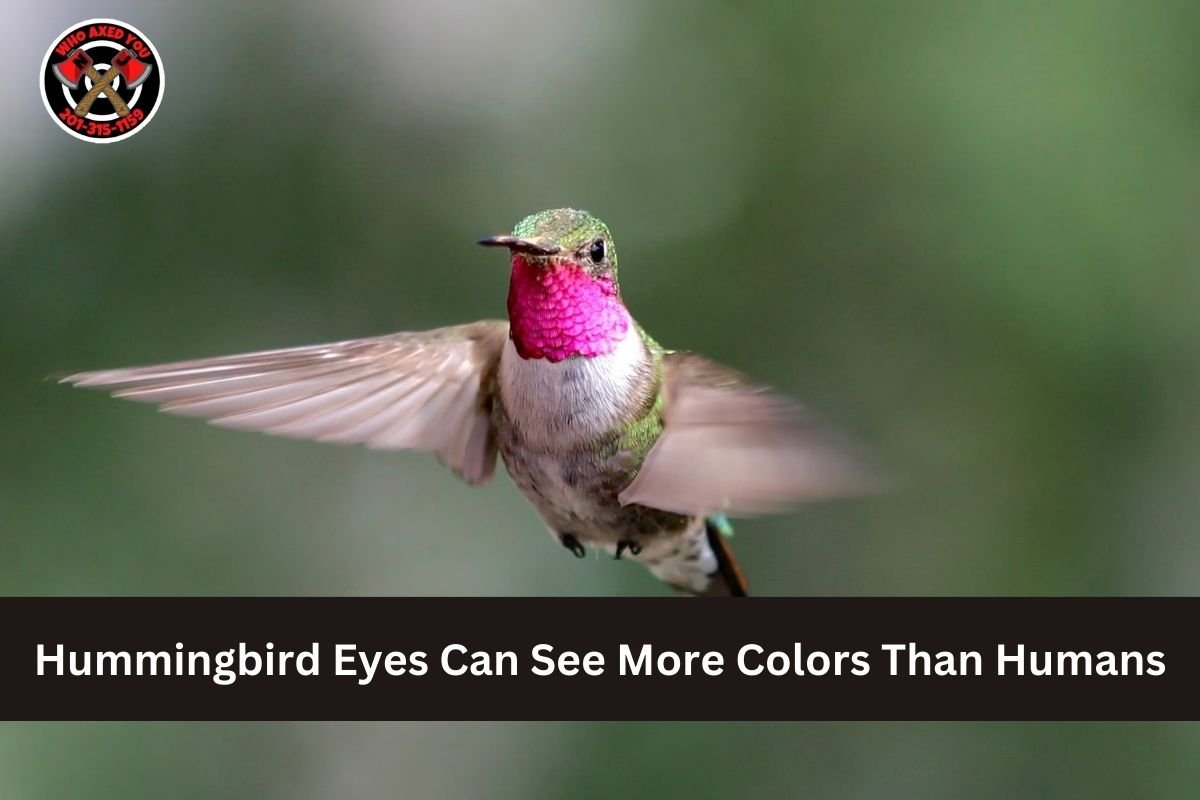Hummingbird Eyes Can See More Colors Than Humans :- Hummingbirds are amazing birds of prey distinguished by their vivid feathers, quick flight, and unique eating patterns. Their extraordinary vision, in particular their capacity to discern a wider spectrum of colors than humans, is one of their most remarkable traits, though. Their distinct ocular structure and evolutionary adaptations are thought to be responsible for this capacity.
Hummingbird Eyes Can See More Colors Than Humans
Hummingbirds are amazing birds of prey distinguished by their colorful plumage, nimble flight, and unique eating habits. Still, one of their most fascinating traits is their extraordinary vision—specifically, their ability to see a wider range of colors than humans. This ability is the result of their unique ocular structure and evolutionary adaptations.
Also Read :- Grilled Sausage with Potatoes and Green Beans
The Construction of the Hummingbird’s Eyesight
The visual system of hummingbirds is exceptional in its level of sophistication. Hummingbirds have a fourth form of cone in their retinas that is sensitive to ultraviolet (UV) light, in contrast to humans, who have three types of color-sensitive cones in their retinas: red, green, and blue.
Their ability to sense a variety of colors that are not apparent to the human eye is made possible by the presence of this additional cone type. Hummingbirds are able to detect wavelengths that are beyond the visible spectrum thanks to the UV-sensitive cones that they possess. This allows them to extend their visual range into the ultraviolet.
Adaptations that have evolved over time
The evolution of hummingbird eyesight is directly connected to the ecological niche that they occupy and the strategies that they use to feed. Hummingbirds get the majority of their nutrition from the nectar that flowers produce, and many of these blossoms have developed UV-reflective patterns that other creatures are unable to see without their eyes.
It is possible for these patterns to direct hummingbirds to the nectar, which improves their capacity to locate food in an efficient manner. In addition, the brilliant colors of flowers, which frequently includes UV reflectivity, acts as a signal to hummingbirds, signaling the presence of nectar and so making it easier for them to pollinate the blooms.
The spectrum of colors
The mix of impulses from the three different types of cones that are found in the human eye is what allows us to perceive colors. We are able to view a variety of hues, ranging from red to violet, thanks to our trichromatic vision process. Hummingbirds, on the other hand, have tetrachromatic vision, which means that they are able to see combinations of four distinct sorts of cone-like structures.
Their color palette is substantially expanded as a result of this tetrachromacy, which enables them to sense a wide range of “nonspectral” hues that humans are unable to even try to conceptualize. Nonspectral colors are hues that are produced when wavelengths that are not next to one another are combined. For example, when ultraviolet light is combined with red or green light, the result is an altogether new color.
Observations and Behaviors
The ability of hummingbirds to differentiate between colors that appear to be identical to those of humans has been demonstrated by research. Experiments were conducted in which hummingbirds were taught to identify particular colors with the receipt of food rewards. Based on the results of these trials, it was revealed that hummingbirds were able to discern between hues that differed simply in their UV reflectance.
They were able to differentiate between a color that was composed entirely of ultraviolet light and a color that was a combination of ultraviolet and another color, such as green or blue. The fact that they are able to do this shows that their vision is highly sensitive to minute variations in hue that are not noticeable to human eyes.
Implications for the Environment
The increased color vision of hummingbirds has profound ramifications for the biodiversity of the environment. It makes it possible for them to locate flowers more effectively, particularly in complex ecosystems where a large number of plants are competing for pollinators. It is also possible that this capacity plays a part in their social interactions and the choosing of mates, given that the colors of their plumage may include UV reflectivity, which is a factor that factors into attractiveness.
Furthermore, the dynamic co-evolutionary relationship between hummingbird vision and floral evolution is highlighted by the interaction between the two topics. To attract hummingbirds, flowers have developed visual signals that are specifically suited to their advanced color vision. This allows flowers to attract hummingbirds.
Observations on the State of Technology and Science
Not only does the study of hummingbird vision contribute to a more profound comprehension of avian biology and ecology, but it also provides the opportunity to gain insights into the creation of new optical technology. Using a technique that is similar to the tetrachromatic vision of hummingbirds.
Imaging systems might be improved by scientists, and new methods of data visualization could be developed, which could be applied in fields such as medicine, surveillance, and remote sensing. The investigation of hummingbird vision serves to bridge the gap between the natural growth of the world and the technological advancements made by humans.
